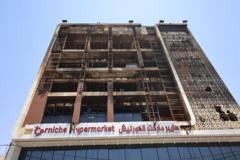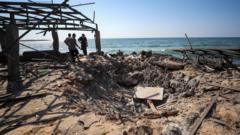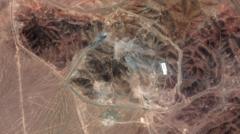The 7.7-magnitude earthquake felt as far as Thailand and Vietnam has resulted in at least 23 fatalities in Myanmar, with many more expected as rescue efforts continue against a backdrop of restricted information.**
Catastrophic 7.7 Magnitude Earthquake Strikes Central Myanmar, Casualties Mount**

Catastrophic 7.7 Magnitude Earthquake Strikes Central Myanmar, Casualties Mount**
A powerful earthquake centered near Mandalay has caused widespread devastation across Southeast Asia, with fatalities reported.**
---
A 7.7-magnitude earthquake hit central Myanmar on March 28, 2025, at approximately 12:50 p.m. local time, leading to substantial damage and loss of life in the region. The tremor reverberated across Southeast Asia, affecting neighboring countries such as Thailand and China, along with reports of potential damage in Vietnam. Currently, the death toll stands at 23, with local authorities expecting this figure to climb as rescue operations develop in the affected areas, notably the city of Mandalay.
In Myanmar, reports indicate that hospitals are filling up with injured individuals, as families seek information on missing persons. The military government's censorship has complicated the flow of information, making it challenging for rescue teams to gain full situational awareness. This factor has raised concerns over the underestimated impact of the earthquake within the country.
Geologists confirmed that the earthquake's epicenter was located around 10 miles northwest of Sagaing, Myanmar. Roughly 12 minutes later, a powerful aftershock, recorded at a magnitude of 6.4, compounded the initial disaster. Relief efforts are hindered by infrastructure damage, particularly to transport routes.
This seismic event has prompted a widespread response, with neighboring countries mobilizing resources, while citizens in various cities in Myanmar, including Mandalay, were urged to evacuate to safer buildings. Reports of structure collapses have surfaced, with significant destruction in urban areas.
As recovery initiatives gear up and assessments continue, the global community is on alert for further developments regarding the scale of the disaster and ongoing emergency response measures. Social media channels and news outlets serve as critical tools for disseminating real-time updates, even as officials work to restore clarity to the situation on the ground.
A 7.7-magnitude earthquake hit central Myanmar on March 28, 2025, at approximately 12:50 p.m. local time, leading to substantial damage and loss of life in the region. The tremor reverberated across Southeast Asia, affecting neighboring countries such as Thailand and China, along with reports of potential damage in Vietnam. Currently, the death toll stands at 23, with local authorities expecting this figure to climb as rescue operations develop in the affected areas, notably the city of Mandalay.
In Myanmar, reports indicate that hospitals are filling up with injured individuals, as families seek information on missing persons. The military government's censorship has complicated the flow of information, making it challenging for rescue teams to gain full situational awareness. This factor has raised concerns over the underestimated impact of the earthquake within the country.
Geologists confirmed that the earthquake's epicenter was located around 10 miles northwest of Sagaing, Myanmar. Roughly 12 minutes later, a powerful aftershock, recorded at a magnitude of 6.4, compounded the initial disaster. Relief efforts are hindered by infrastructure damage, particularly to transport routes.
This seismic event has prompted a widespread response, with neighboring countries mobilizing resources, while citizens in various cities in Myanmar, including Mandalay, were urged to evacuate to safer buildings. Reports of structure collapses have surfaced, with significant destruction in urban areas.
As recovery initiatives gear up and assessments continue, the global community is on alert for further developments regarding the scale of the disaster and ongoing emergency response measures. Social media channels and news outlets serve as critical tools for disseminating real-time updates, even as officials work to restore clarity to the situation on the ground.





















